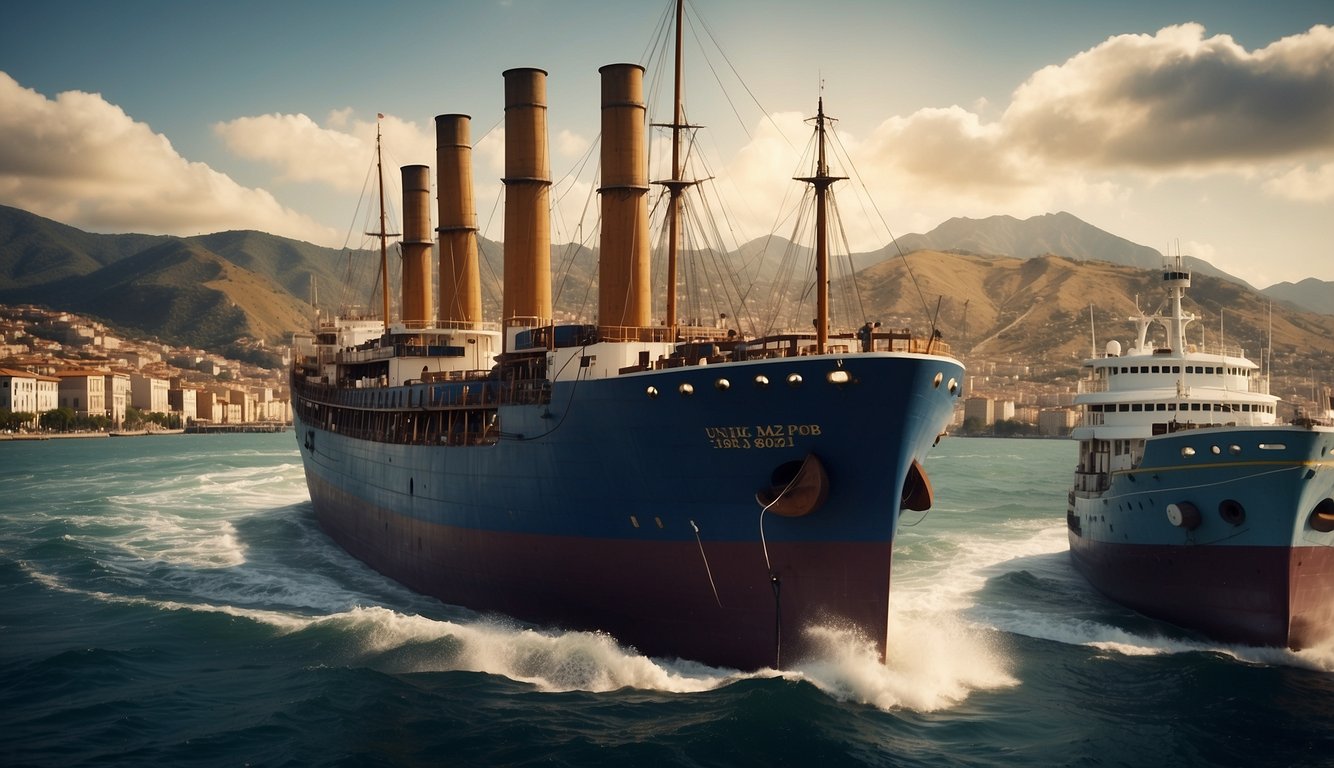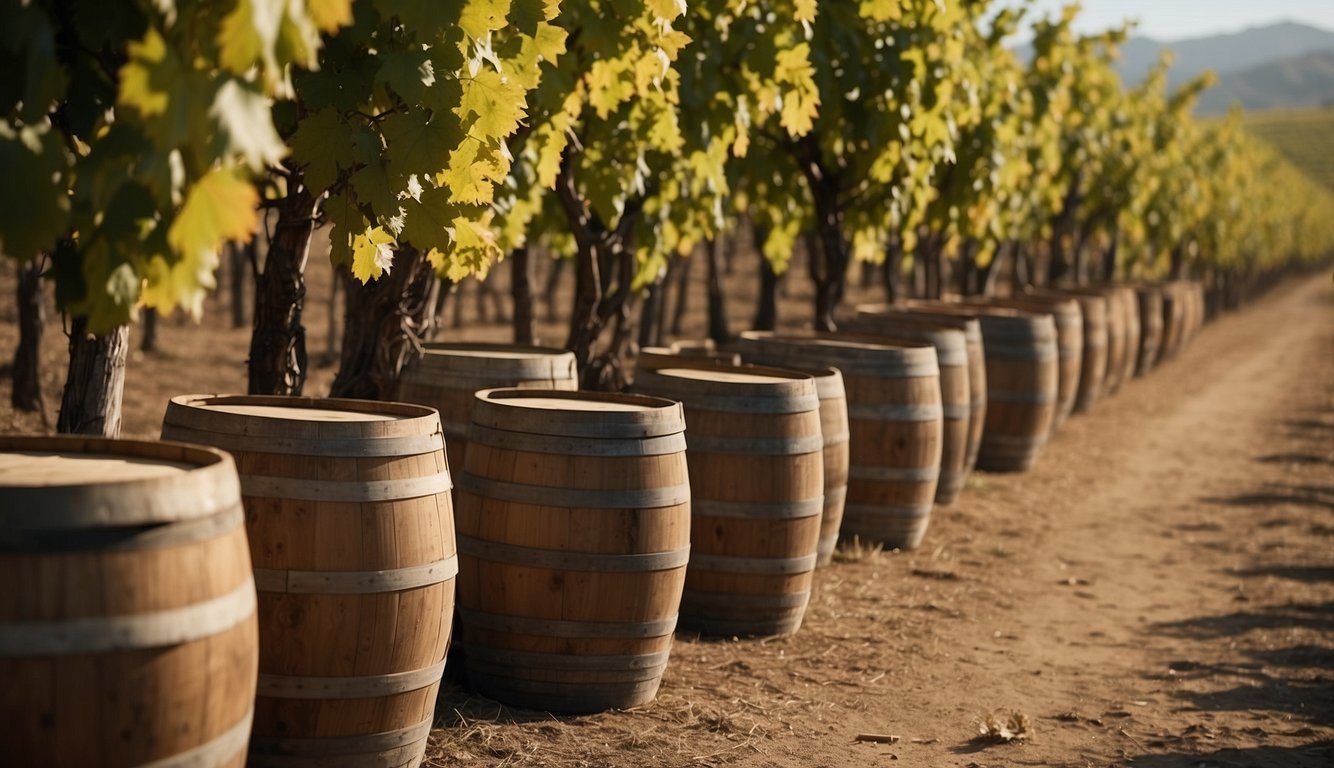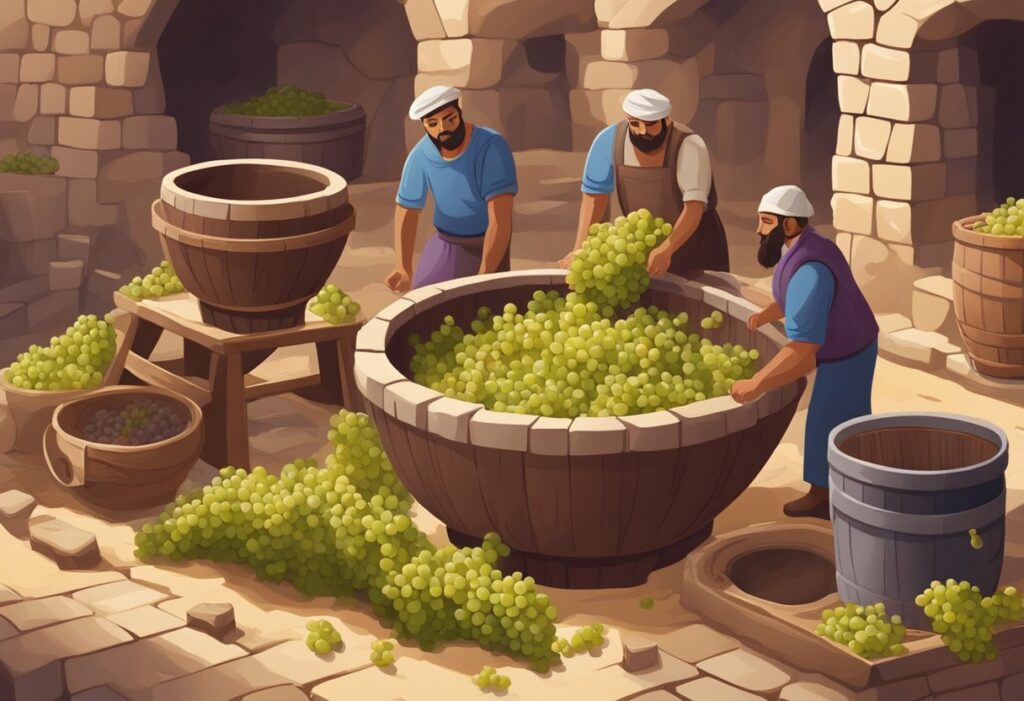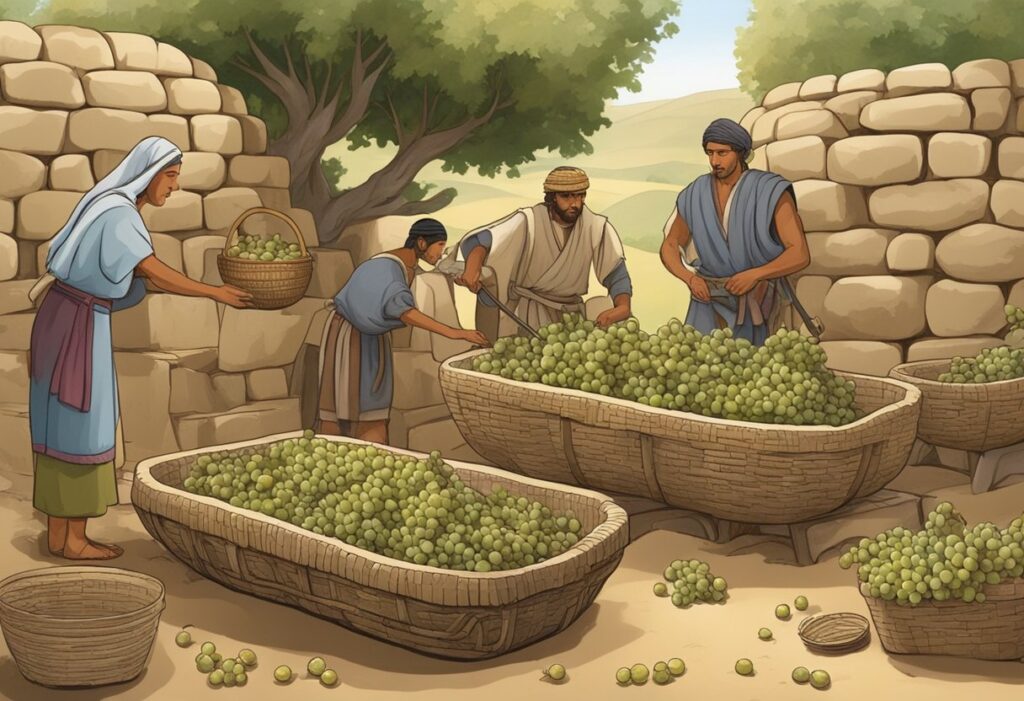During the Age of Exploration, spanning from the early 15th to the 17th century, European explorers embarked on voyages that dramatically transformed global trade, including the wine industry. This era opened up new trade routes and established connections between the Old World and the New World, leading to the introduction of diverse wine varieties and cultivation techniques across continents. As explorers sought new lands, they brought with them European viticulture practices, significantly impacting wine production in regions such as South America and North America.

For example, the Age of Exploration Wine Trade facilitated the exchange of new grape varieties and winemaking knowledge. This exchange not only enriched the cultural practices associated with winemaking but also boosted economies by creating robust trade networks. Your favorite wine today might owe its existence to the voyages taken centuries ago, as these exploratory missions laid the groundwork for what we now know as the global wine industry.
Globalization, driven by the activities during the Age of Exploration, played a crucial role in the spread of wine cultivation and consumption. This period marked the beginning of a more interconnected world where goods, including wine, flowed freely between distant lands. Whether you are a wine aficionado or just someone curious about history, understanding this era provides insight into how today’s global wine landscape was shaped. With such a rich history, the story of wine is indeed one of adventure and discovery.
Historical Context of Wine Trade During the Age of Exploration
During the Age of Exploration, Europeans discovered new trade routes and expanded their territories. This period saw the rise of wine as a global commodity, influencing consumption patterns and economic systems across continents.
Exploration and Expansion of Trade Routes
The Age of Exploration, starting in the early 15th century, saw European powers such as Spain, Portugal, and England sailing to uncharted territories. These voyages were primarily motivated by the quest for new trade routes and wealth. The establishment of colonies in the Americas, Africa, and Asia enabled the expansion of the wine trade beyond Europe.
Traditional wine-producing regions in Europe like France and Spain started trading with new markets. Winemaking and viticulture techniques had to adapt to new climates and soils found in colonies. This led to innovations in vineyard management and wine production, ensuring a steady supply of wine for both local consumption and international trade.
Wine as a Global Commodity
With the establishment of new trade routes, wine became an important global commodity. European wines were introduced to new regions, increasing demand and fostering economic growth. Countries like Portugal and Spain capitalized on this demand, increasing their wine exports to new colonies and trading partners.
The Renaissance period also saw wine being recognized as a symbol of refinement, enhancing its status as a valuable commodity. Winemaking advances during this time improved the quality and variety of wines available, making them more appealing to a broader range of consumers. Consequently, wine trade contributed significantly to the economies of European nations and their colonies.
Influence on Wine Consumption Patterns
The globalization of the wine trade during the Age of Exploration also influenced consumption patterns. European settlers and traders introduced their wine-drinking habits to the Americas, Africa, and Asia. This led to a fusion of wine cultures and the adoption of new customs and preferences.
Colonial influence transformed local consumption patterns by integrating wine into religious, social, and cultural ceremonies. Over time, wine establishments like taverns and inns became popular meeting places in colonies, further embedding wine into daily life. The increase in wine availability and variety also allowed for the emergence of specialized markets and consumer preferences, shaping the future of global wine consumption.
Impact on Wine Cultivation and Viticulture
The Age of Exploration brought significant changes to wine cultivation. These changes included the adaptation of grapevines to new climates, the spread of viticulture to new geographical regions, and the evolution of winemaking practices.
Adaptation of Grapevines Overseas
During this period, wine cultivation expanded beyond Europe. European grapevines, especially Vitis vinifera, were introduced to new regions. These grapevines had to adapt to different climates and soils. This adaptation led to the development of new cultivars that were better suited to these environments. For example, Spanish explorers brought vines to South America, influencing modern-day Argentinian and Chilean viticulture. The adaptation process often involved trial and error, with some grapevines thriving while others did not.
Geographical Diversification of Viticulture
The geographical diversification of viticulture during the Age of Exploration was profound. Countries like South Africa, Australia, and the United States became important producers. Each region developed its own unique terroir, which combined soil, climate, and other factors to create distinct wine profiles. New World Wine regions often experimented with different grape varieties and winemaking techniques to find what worked best for their specific environments. The spread of viticulture to these new regions also helped establish global trade networks, making wine more accessible worldwide.
New World vs. Old World Practices
The Age of Exploration highlighted differences between New World and Old World winemaking practices. Old World countries like France, Italy, and Spain relied on traditional methods and strict regulations. These practices were deeply rooted in history and culture. In contrast, New World regions such as California and Australia embraced innovation and experimentation. They often adopted advanced technologies and modern techniques in their vineyards and wineries. This approach led to unique styles of wine that could be distinctively different from their Old World counterparts.
The resulting diversity in wine production methods has enriched the global wine culture, providing wine enthusiasts with a wide variety of options to explore. You can experience the taste of different terroirs and the unique characteristics imparted by New World and Old World practices.
Advancements in Winemaking Techniques

The Age of Exploration brought significant changes to winemaking. Key areas of improvement included technological advancements in Europe, the spread of winemaking knowledge, and the introduction of new grape varieties.
Technological Improvements in Europe
During the Age of Exploration, Europe saw major leaps in winemaking technology. Innovations like the wine press made grape crushing more efficient. This helped in extracting more juice and improving the overall quality of the wine.
Another important advancement was better fermentation control. Winemakers started using stronger containers, like wood and glass, which maintained consistent temperatures. This was crucial for controlling acidity and sugar levels, leading to a finer balance of aromas and flavors.
The science of viticulture also advanced. Improved understanding of photosynthesis and vine health meant better vineyard management. This led to healthier vines producing higher-quality grapes. All these tech improvements laid a solid foundation for modern winemaking.
Spread of Winemaking Knowledge
The Age of Exploration was a period of knowledge transfer. European explorers brought their winemaking skills to new continents. This transfer helped establish local wine industries around the world. For example, Spanish explorers introduced winemaking to South America.
These new regions developed their own techniques while learning from European traditions. This exchange of ideas improved winemaking globally and introduced diverse styles and methods.
Written texts on winemaking were also disseminated widely. Books and other documents provided detailed techniques from planting to bottling. This allowed even remote regions to advance their winemaking capabilities.
Introduction of Non-Indigenous Grape Varieties
Explorers didn’t just transfer techniques; they also carried non-indigenous grape varieties to new areas. For instance, Cabernet Sauvignon and Chardonnay were brought to the Americas, Africa, and Australasia.
Introducing these new winegrape varieties diversified the global wine industry. Regions now had access to grapes that could thrive in different climates and soil types. This led to an explosion of new wine styles that catered to various taste preferences.
These new varieties significantly impacted local economies. Local winemakers could now produce and export wines that were previously unknown. This not only boosted trade but also enriched the global wine culture with new flavors and experiences.
Growth of Wine Regions and Economies

The Age of Exploration had a key role in expanding wine regions and economies. New wine regions emerged as wine became a vital item in international trade, influencing both local and global economies. Additionally, wine evolved into a cultural symbol in many societies.
Rise of New World Wine Regions
With explorers venturing across the globe, new wine regions began to develop outside traditional European areas. Argentina and Chile became notable for their unique varieties like Malbec and Carmenere. In Australia, regions like the Barossa Valley gained fame for their bold Shiraz wines. Similarly, South Africa‘s Stellenbosch region started producing high-quality wines that gained international recognition.
New Zealand and China also joined the wine scene. New Zealand’s Marlborough region became famous for its crisp Sauvignon Blanc. China’s Hebei and Ningxia regions began making a splash with their emerging wine industry. Each of these regions brought different climates and soils, which influenced the unique flavors and qualities of the wines produced.
Economic Impact on Local and Global Scales
The global expansion of wine trade significantly boosted both local and international economies. Traditional wine powerhouses like France, Italy, and Spain remain top wine exporters, greatly affecting their economies. For example, regions like Bordeaux and Burgundy produce wines that are highly sought after worldwide.
New World wine regions like the Napa Valley in the U.S. and Mendoza in Argentina saw an economic boost from wine tourism and exports. Chile‘s wine industry contributes significantly to its GDP, providing jobs and supporting local businesses. The global wine trade has created a vast network of producers, traders, and consumers, driving economic growth on multiple levels.
Development of Wine as a Symbol of Cultural Significance
With the spread of wine, its cultural significance grew in many parts of the world. In European countries like France, wine is deeply woven into social customs and celebrations. Italy and Spain also hold wine as a part of their cultural identity, showcased in festivals and daily life.
In the New World, wine started to signify social status and sophistication. Australia and South Africa saw wine becoming a symbol of quality and lifestyle. Wine also gained popularity in places like China and England. Wine often appears at special events, symbolizing celebration and excellence.
This cultural shift has also driven the wine market. As more people view wine as a symbol of prestige, demand and production continue to rise, further cementing its economic and social importance.
Contemporary Global Wine Market and Tourism

The global wine market is rapidly changing due to rising demand and the growth of wine tourism. You’ll notice new trends in wine production and how tourism shapes the industry.
Influence of Global Demand on Wine Production
Global demand for wine significantly influences production patterns. As consumers seek diverse options, wineries are expanding their production to include varieties like sparkling wine. Different regions are now focusing on producing wines that cater to specific tastes, driven by countries like the United States and China.
New markets such as Brazil and India are increasing their wine consumption, pushing producers to adapt. Wine producers are balancing tradition with innovation to meet evolving preferences. This shift encourages a rich diversity in wine offerings globally.
Emergence of Wine Tourism and Hospitality
Wine tourism has become a significant part of the global market. Regions like Bordeaux and Napa Valley invest heavily in tourism facilities to attract wine enthusiasts. These areas offer tastings, vineyard tours, and luxurious accommodations for visitors.
Wine in literature and art often highlights these storied regions, enhancing their appeal. Countries in the New World, such as Australia and South Africa, are not far behind. They provide unique experiences that blend local culture with wine-oriented activities, boosting the local economy and expanding global interest in their wines.
Tourists eager to explore traditional and modern wineries help boost wine tourism globally. This rise in tourism encourages wineries to deliver memorable experiences, evolving the relationship between wine production, tourism, and hospitality services.

